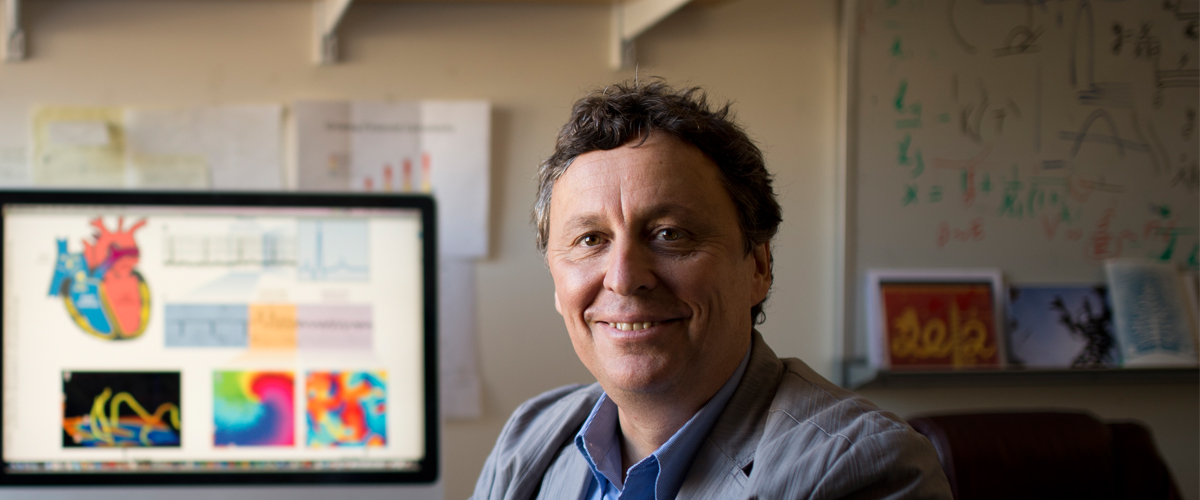Alain Karma, distinguished professor of physics at Northeastern University, had an article titled, “Topology-generating interfacial pattern formation during liquid metal dealloying” published in the online journal Nature Communications on November 19, 2015.
This research extends in a new direction work done by Dr. Karma and Dr. Jonah Erlebacher in collaboration with other researchers 15 years ago on electrochemical dealloying. After meeting again two years ago at a research conference, Karma and Erlebacher renewed their academic collaboration to explore the novel technique of liquid metal dealloying, which offers unprecedented capability to produce materials with ultra-high surface area to volume ratio. These materials are critical for a wide variety of technological applications, since materials with a high surface area to volume ratio can increase the speed and efficiency of chemical reactions, chemically detect very small amounts of a substance, or store a high amount of electrical energy in supercapacitor applications, as a few examples.
Liquid-metal dealloying is accomplished by separating two atomic elements that make up a solid binary alloy. When the alloy is put into contact with a hot liquid metal, one of the elements dissolves into the liquid metal but the other does not, which results in a material with a complex surface and topologically connected nanoporous structure. Dr. Karma’s group at Northeastern University and Dr. Erlebacher’s group at John Hopkins University combined computational modeling and experimentation to explain how the liquid-metal dealloying process can be used to create open three-dimensional nonporous structures that have high surface area to volume ratio and are more resistant to stress and chemical degradation than currently used materials. Karma and Erlebacher’s work demonstrates that these substances form when the two alloy elements unmix in an extremely thin layer between the solid metal alloy and the hot liquid metal. This separation lets liquid channels penetrate the alloy, forming a complex nanostructure than can then be further processed into being nonporous.
Liquid-metal dealloying “offers almost infinite possibilities” for combining elements to produce diverse nanostructures, Dr. Karma explains. Potential applications include producing extremely long-lasting batteries, creating electrolytic capacitors with ultra-high surface areas, and producing highly resilient nanocomposite materials.
Dr. Karma’s work focuses on theoretical problems at the interface of physics, materials science, and biology. He received a PhD in Physics from the University of California at Santa Barbara and has numerous papers published in prestigious journals including Nature and Nature journals, Science, PNAS, and Physics Review Letters. The recent article by Drs. Karma and Erlebacher and members of their research group, Pierre-Antoine Geslin, Ian McCue, and Bernard Gaskey can be read here.

